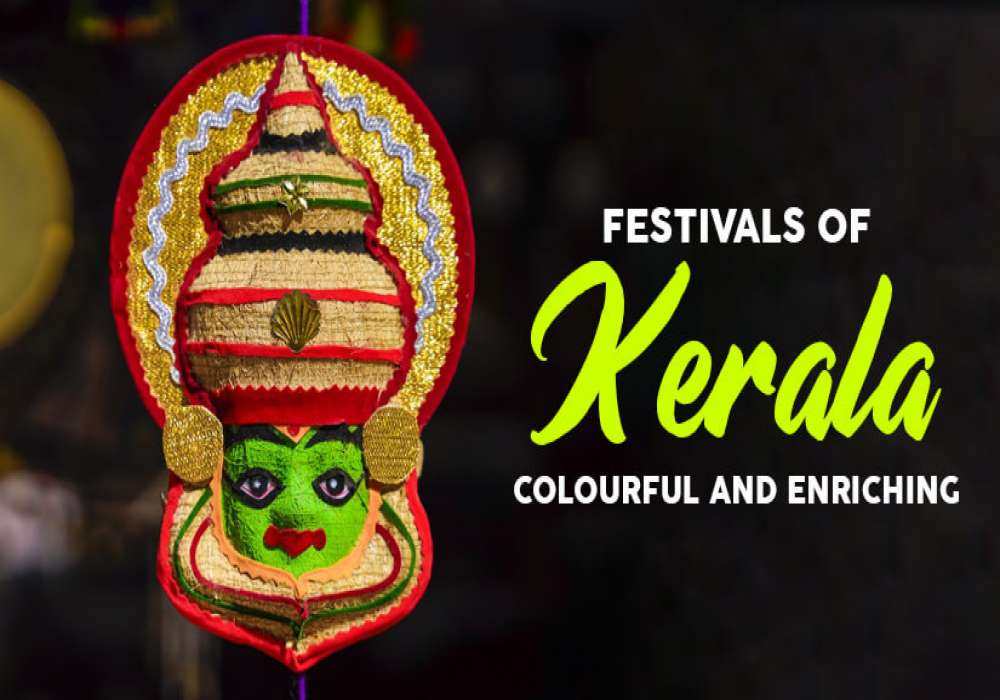
Last Updated At: 09-Sep-2025
Festivals of Kerala 2025 - Famous Cultural and Traditional Celebrations
Key Takeaways
- Kerala offers a vibrant mix of Ayurvedic treatments, scenic beauty, and rich cultural experiences, enhanced by its colorful festivals.
- Known for its spices, tea plantations, backwaters, and beaches, Kerala becomes even more captivating during its traditional celebrations.
- Festivals are a major attraction for tourists and reflect the cultural heritage of “God’s Own Country.”
- Onam is a 10-day harvest festival celebrated statewide with rituals, feasts, folk dances, and boat races.
- Attukal Pongala is a women-only religious gathering held in Thiruvananthapuram, known for its record-breaking participation.
- Vishu marks the Malayalam New Year, celebrated with fireworks, traditional meals, and symbolic rituals like Vishu Kani.
- Thrissur Pooram is a grand temple festival featuring decorated elephants and rhythmic drum performances.
- Theyyam is a traditional dance ritual involving 400 unique forms, celebrated mostly in the northern regions of Kerala.
- Boat Race Festival is a major tourist draw with events like the Nehru Trophy and Aranmula races showcasing long snake boats.
- Makaravilakku, celebrated at Sabarimala, involves lighting rituals and draws massive pilgrim participation.
- Adoor Gajamela features a parade of ornamented elephants and cultural programs dedicated to Lord Krishna.
- Painkuni Festival includes unique royal rituals and the symbolic immersion of Pandava figures in the sea.
- Ambalapuzha Arattu is a 10-day coastal town celebration with martial arts displays and a ceremonial sea bath for the deity.
- Kerala’s festivals embody its spiritual, artistic, and community values, making it a culturally immersive destination.
With the best Ayurvedic treatments in Kerala to pamper yourself to an unforgettable culinary experience to satiate your taste buds; the fun factor multiplies if you add colorful festivals of Kerala to your to-do-list. One of the best tourist places in India, Kerala is famous for its aromatic spices, tea plantations, and stunning topography which comprises serene backwaters, verdant tea gardens, sprawling spice plantations, virgin beaches, and whatnot! Savor the surreal beauty of Kerala.
List of Top 10 Fairs and Festivals Of Kerala 2025
| Festival | Festival & Its Origin | Traditional Dishes | Key Locations | Attire / Dress Code | Unique Activities / Rituals |
| Onam | Harvest festival; celebrates return of King Mahabali from mythology | Onasadya (multi-course vegetarian feast, Payasam) | Statewide; highlights in Kochi, Thrissur | Men: Mundu; Women: Kasavu saree | Pookalam, Vallamkali (boat race), Pulikali, Onakalikal, Elephant processions |
| Attukal Pongala | Religious festival dedicated to Goddess Bhagavathi at Attukal Temple | Pongala Payasam (sweet rice pudding) | Attukal Bhagavathy Temple, Thiruvananthapuram | Women wear traditional sarees or salwar suits | Cooking Pongala in earthen pots by millions of women, world's largest gathering of women |
| Vishu | Malayalam New Year; marks spring equinox | Vishu Sadya, Vishu Kanji | All over Kerala | New traditional clothes (Keralite attire) | Vishukkani arrangement, bursting firecrackers, gifting money (Vishukkaineetam) |
| Thrissur Pooram | Temple festival featuring gathering of deities | Temple prasadam, Sadya | Vadakkumnathan Temple, Thrissur | Men: Mundu; Women: Kerala saree | Kudamattam (umbrella exchange), Ilanjithara Melam, parade of decorated elephants |
| Theyyam Festival | Ritual dance festival with Dravidian tribal origins | Local temple offerings and traditional food | North Kerala (Kannur, Kasaragod) | Dancers wear elaborate costumes and face paint | Kaliyattam dance rituals, face painting, fire-walking, invoking deities through performance |
| Boat Race Festival | Celebrates ancient boat rivalry among local kingdoms | Sadya and local snacks | Alleppey, Aranmula, Payippad, Champakulam | Casual/traditional; rowers wear uniform dhotis | Vallamkali (snake boat races), synchronized rowing, cheering and festive gatherings |
| Makaravilakku | Sabarimala pilgrimage marking Makar Sankranti; honors Lord Ayyappa | Prasadam (Aravana payasam, Appam) | Sabarimala Temple, Pathanamthitta | Devotees wear black/navy blue & rudraksha | Lighting of Makarajyothi, pilgrimage rituals, chanting, Deeparadhana |
| Adoor Gajamela | Elephant festival in honor of Lord Krishna | Local delicacies and temple feasts | Parthasarathy Temple, Adoor | Traditional Kerala attire | Procession of 9 decorated elephants, cultural programs, musical performances |
| Painkuni Festival | Rituals to appease Lord Indra; linked with royal Travancore family | Sadya, temple offerings | Sree Padmanabha Swamy Temple, Thiruvananthapuram | Royal attire for rituals, traditional wear | Giant fiberglass Pandava figures, Palli Vetta (royal hunt), Arattu immersion procession |
| Ambalapuzha Arattu | Temple festival combining martial arts and rituals | Ambalapuzha Pal Payasam, Nadakashala Sadya | Ambalapuzha, Alappuzha district | Temple wear; white attire preferred | Kodiyettu (flag hoisting), Velakali dance, Arattu (holy dip of deity), grand feast |
Witnessing the vibrancy of God’s own country through an array of colorful and electrifying festivals is one of the enriching experiences that a traveler can discover. Scroll through the festivals of Kerala to mark your travel calendar!
- Onam
- Attukal Pongala
- Vishu
- Thrissur Pooram
- Theyyam Festival
- Boat Race Festival
- Makaravilakku
- Adoor Gajamela
- Painkuni Festival
- Ambalapuzha Arattu
1. Onam
Onam is a grand national harvest festival of Kerala which attracts a large number of tourists from different parts of India. According to legend, the Onam festival is celebrated to mark the return of demon King Mahabali to the land of Kerala. Every year, the Onam festival is celebrated for 10 days during which various rituals are followed with great devotion to welcome the kind-hearted and generous King. These ten days of Onam are named Atham, Chithira, Chodi, Vishakam, Anizham, Thriketta, Moolam, Pooradam, Uthradom, and Thiruvonam. During these ten days of Onam, Kerala looks utterly vibrant as people wear new clothes, cook delicacies, decorate their houses, and organize various cultural events.
When is Onam celebrated?
Usually falls in the month of August and September every year
Where is Onam celebrated?
All over Kerala
What is the Highlight of Onam?
Onasadya (nine-course meal), Onakalikal (games played during Onam), Elephant Procession, Pulikali & Thumbi Thullai (folk dances), Vallamkali Boat Race
2. Attukal Pongala
Attukal Pongala is a religious festival of Kerala that is dedicated to Goddess Bhagavathi. Celebrated for 10 days at the Attukal Bhagavathy Temple in Thiruvananthapuram, Attukal Pongala marks the world’s largest congregation of women. The most fascinating part of this festival is that entry of men is strictly prohibited inside the temple complex since it's a women-centric festival of the state.
When is Attukal Pongala celebrated?
Usually falls in the month of February
Where is Attukal Pongala celebrated?
Attukal Bhagavathy Temple in Thiruvananthapuram
What is the highlight of Attukal Pongala?
Act of making payasam and World’s largest congregation of women
Suggested Read: 8 Best Tourist Places In Kerala That Are Travellers Delight
3. Vishu
Vishu is a spring festival of Kerala which is celebrated on the first day of the Malayalam calendar. Also known as the new year in Kerala, the celebration of Vishu involves decorating houses and bursting crackers. Vishu Kani, comprising rice, fruits, coins, and Konna flowers is arranged by the eldest female member of the family and offered to Lord Krishna on the day prior to the festival. People wear new clothes and prepare delicious Sadya to celebrate the festival that brings prosperity.
When is the Vishu Festival celebrated?
The month of Medam which usually falls in April/May
Place where Vishu Festival is celebrated?
All over Kerala
What is the highlight of the Vishu Festival?
Decorations, preparation of Sadya, and bursting of crackers
Also Read - Famous Food Of Kerala
4. Thrissur Pooram
Thrissur Pooram is an annual temple festival of Kerala which is worth witnessing. It is a grand assembly of Gods and Goddesses who visit Vadakkumnathan Temple premises on elephants adorned with ornaments. Caparisoned elephants, vibrant umbrellas, and the rhythmic beating of drums add to the vibe of the festival. Another high point of this cultural festival is a phenomenal instrumental performance that gives a kaleidoscopic view of Kerala’s vibrant festivals.
When is Thrissur Pooram celebrated?
Month Of Medom which falls in April-May
Place where Thrissur Pooram is celebrated?
Thekkinkadu Maidanam, Thrissur
What is the highlight of Thrissur Pooram?
Kudamattam ceremony and Ilanjithara melam
5. Theyyam Festival
The spectacular dance festival of Kerala, Theyyam is precisely considered as God’s dance which actually has 400 unique forms. With different make-up, costumes, songs, choreography in each dance form, what’s worth witnessing is the size and appearance of ornaments adorned by the Theyyam dancers. The 4-day festival is dated back to the Dravidian age and is an integral part of the ancient tribal culture of Kerala.
When is the Theyyam Festival celebrated?
Between December and April
Place where the Theyyam Festival is celebrated?
Kasargod and other regions of Kerala
What is the highlight of the Theyyam Festival?
Kaliyattam, a ritual dance in Kerala
Suggested Read: 7 Best Beaches In Kerala To Add Romance In Your Life
6. Boat Race Festival
One of the major highlights of Kerala Tourism, the Boat Race Festival of Kerala alone draws thousands of tourists from all over the world. With as many as four popular snake boat races, the Nehru Trophy on Alleppey's Punnamada Lake and Aranmula Snake Boat Race draw the maximum number of visitors owing to the grandeur. The tradition of the snake boat race is as old as 400 years when the kings of different regions used to fight with each other in boats. Boat race festivals in Kerala are usually a one-day affair, however, in Aranmula it is celebrated for 10 days at a stretch.
When is the Boat Race Festival celebrated?
Boat races are held during the 10 days of the Onam festival which falls somewhere in August and September
Place where the Boat Race Festival is celebrated?
Alleppey, Champakulam, Payippad, Aranmula
What is the highlight of the Boat Race Festival?
The rhythmic rowing of 100 feet long snake boats.
7. Makaravilakku
The famous Makar Sankranti festival of India is celebrated as Makaravilaku in Kerala. It is the traditional festival of Kerala when Lord Ayyapan is worshipped with great devotion and many rituals like purification, Prasadasudhi (distribution of prasad ), Deeparadhana (lighting Diyas) take place at the Sabarimala temple which is a popular pilgrimage place in India. One of the significant festivals of Kerala, Makaravilakku is marked by the presence of saints and lakhs of devotees from all over India.
When is Makaravilakku celebrated?
Every year in mid-January
Place where Makaravilakku is celebrated?
The shrine of Sabarimala
What is the highlight of Makaravilakku?
Makarajyothi, the lighting of the lamp on the Ponnambalamedu hill
8. Adoor Gajamela
As the name suggests, Adoor Gajamela is an elephant festival of Kerala which is celebrated to honor Lord Krishna. Adoor Gajmela is a ten-day festival that is celebrated with great fervor every year. Various cultural programs are organized along with the parade of 9 mighty elephants that are beautifully adorned with paints and metal ornaments. Synonymous to the grand fair of tuskers, Adoor Gajamela is a treat to the eyes of people who love to watch the unique customs of Kerala.
When is Adoor Gajamela celebrated?
The month of Makaram, i.e. somewhere in January or February
Place where Adoor Gajamela is celebrated?
Parthasarathy Temple in Adoor
What is the highlight of Adoor Gajamela?
Cultural Programs and 9 mighty tuskers being paraded, adorned with a plethora of special decorations.
9. Painkuni Festival
The most celebrated 10-day festival of Kerala, the Painkuni Festival is hosted at the Sree Padmanabha Swamy Temple with great pomp and show. On the ninth day of the Painkuni festival, the head of the Travancore Royal Family performs the ritual of royal hunt ritual which is known as Palli Vetta near the Vettakkorumakan Temple in the Fort area. Massive figures of Pandavas are made with fiberglass which is placed at the eastern gate of the temple to appease the God of Rain, Indra. On the tenth day of the festival, these figures are immersed in the sea near Shanghumugham beach.
When is the Painkuni Festival celebrated?
Somewhere in the month of March and April
Place where the Painkuni Festival is celebrated?
Sree Padmanabha Swamy Temple in Thiruvananthapuram
What is the highlight of the Painkuni Festival?
The grand Arattu procession near Shanghumugham beach and unique rituals
10. Ambalapuzha Arattu
Ambalapuzha Arattu is a ten-day festival in the small coastal town of Kerala which begins with the special flag hoisting ceremony called Kodiyettu. During this festival of Kerala, the procession by caparisoned tuskers is carried out and Velakali, the martial art form originated in Ambalapuzha is performed. A special feast, Ambalapuzha Nadakashala Sadya is served on Pallivetta day. The 10-day festival concludes with Arattu which is the holy bath of the deity at Shangumugham beach.
When is Ambalapuzha Arattu celebrated?
Meenam that falls in the month of March and April
Place where Ambalapuzha Arattu is celebrated?
The Coastal town of Ambalapuzha in Kerala
What is the highlight of Ambalapuzha Arattu?
Kodiyettu, Ambalapuzha Nadakashala Sadya, Velakali, Arattu
Frequently Asked Questions About Famous Festivals of Kerala
Q1. What are the major festivals celebrated in Kerala throughout the year?
A1. Kerala celebrates a wide range of festivals throughout the year including Onam, Attukal Pongala, Vishu, Thrissur Pooram, Theyyam Festival, Boat Race Festival, Makaravilakku, Adoor Gajamela, Painkuni Festival, and Ambalapuzha Arattu. These festivals are deeply rooted in religious, cultural, and seasonal traditions of the state.
Q2. Why is Onam considered the most important festival in Kerala?
A2. Onam is Kerala’s most important festival as it marks the legendary homecoming of King Mahabali and celebrates the harvest season. It is a ten-day-long cultural extravaganza involving grand feasts (Onasadya), traditional games, floral decorations (Pookalam), boat races, dances, and temple rituals that unite people across communities.
Q3. How do Kerala’s festivals reflect its agrarian and cultural heritage?
A3. Kerala’s festivals are closely tied to its agrarian lifestyle and cultural roots. For instance, Onam celebrates the harvest season, Vishu marks the agricultural New Year, and Boat Races emerged from historical riverine rivalries. Rituals like Theyyam and temple processions showcase Kerala's rich folklore, devotion, and communal harmony.
Q4. What is the significance of Vishu in the lives of people in Kerala?
A4. Vishu marks the Malayalam New Year and symbolizes prosperity and new beginnings. The festival begins with viewing the 'Vishukkani' (auspicious arrangement of items), followed by special meals, fireworks, and the tradition of gifting money (Vishukkaineetam), reinforcing family bonds and hopeful outlooks for the year ahead.
Q5. How is Thrissur Pooram celebrated differently in temples across Kerala?
A5. While Thrissur Pooram is uniquely grand at the Vadakkumnathan Temple with massive elephant processions and percussion ensembles, smaller versions in other temples maintain similar rituals with localized customs. However, none match the scale, competitive display of parasols (Kudamattam), and musical intensity seen in Thrissur.
--- Published By Adotrip
Latest Blogs
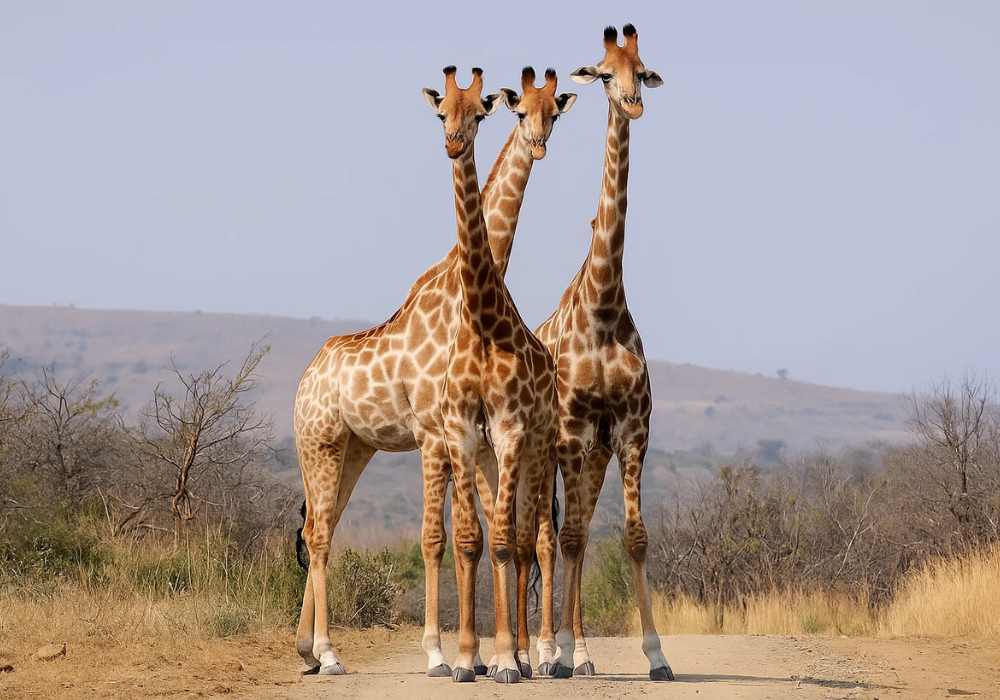
Cash in the Wild: My Safari Adventure Across Kenya with Only...

One Day Picnic Spot Near Pune - Adventure, Trekking and Natu...
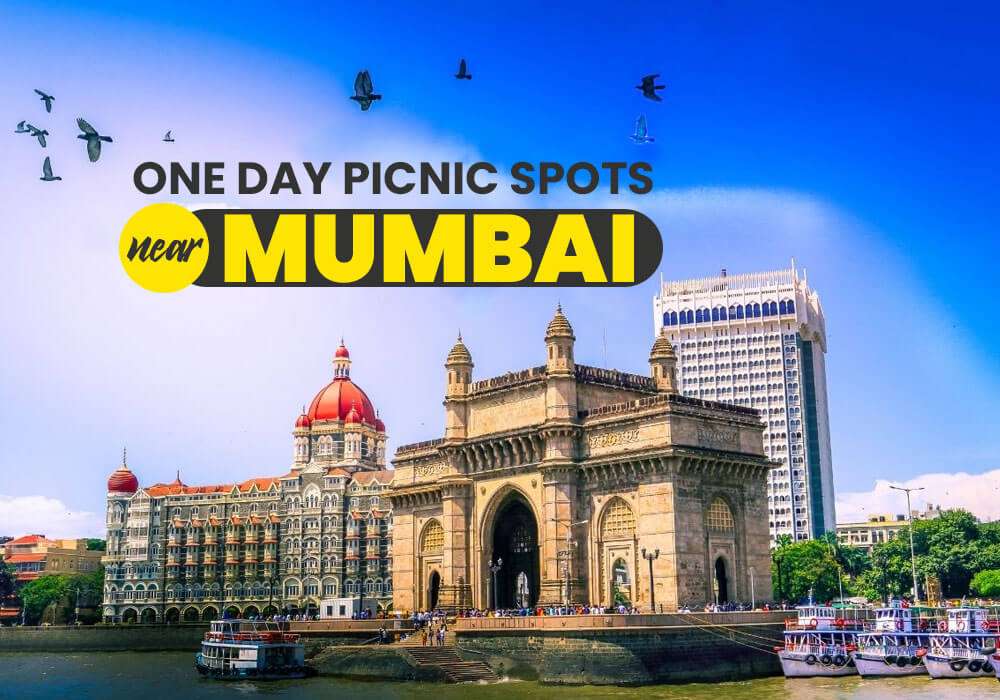
One Day Picnic Spots Near Mumbai - Monsoon, Adventure, Beach...

The Best Places to Go in Thailand in 2025
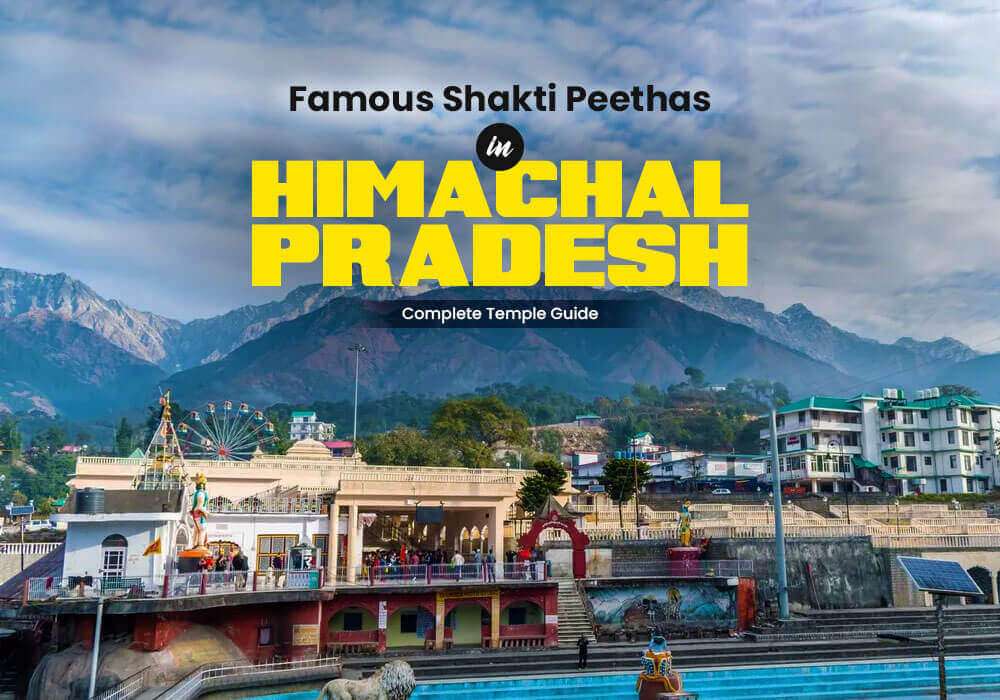

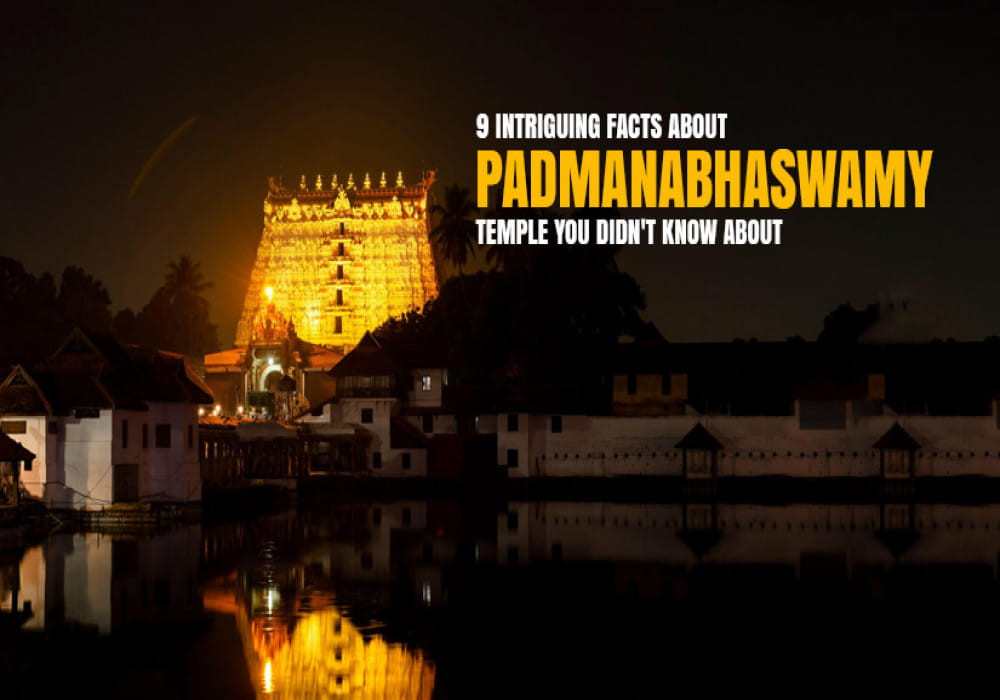
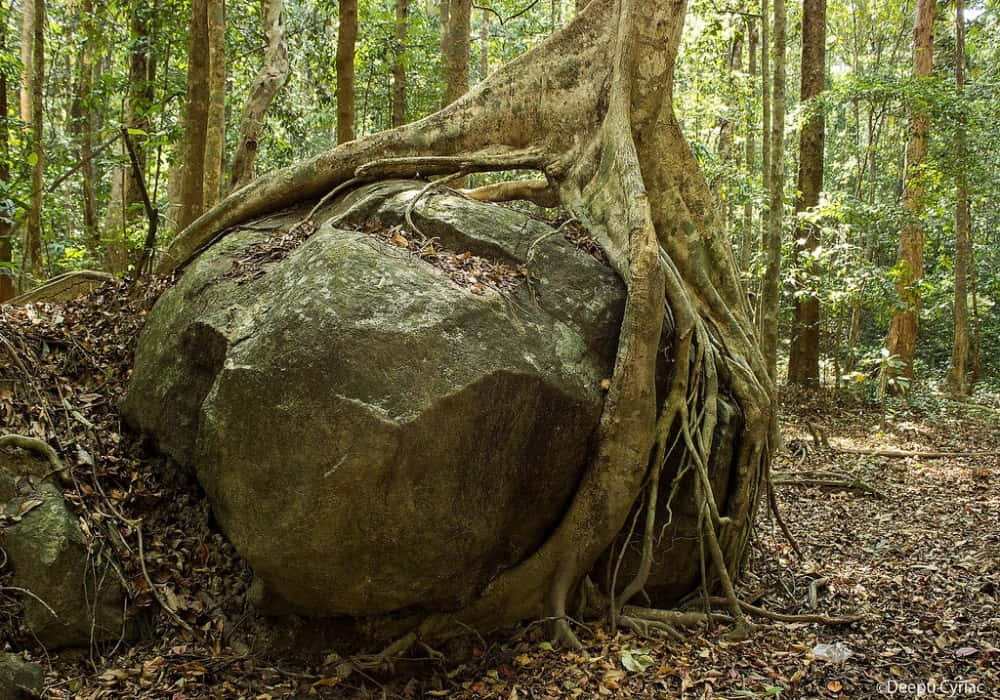
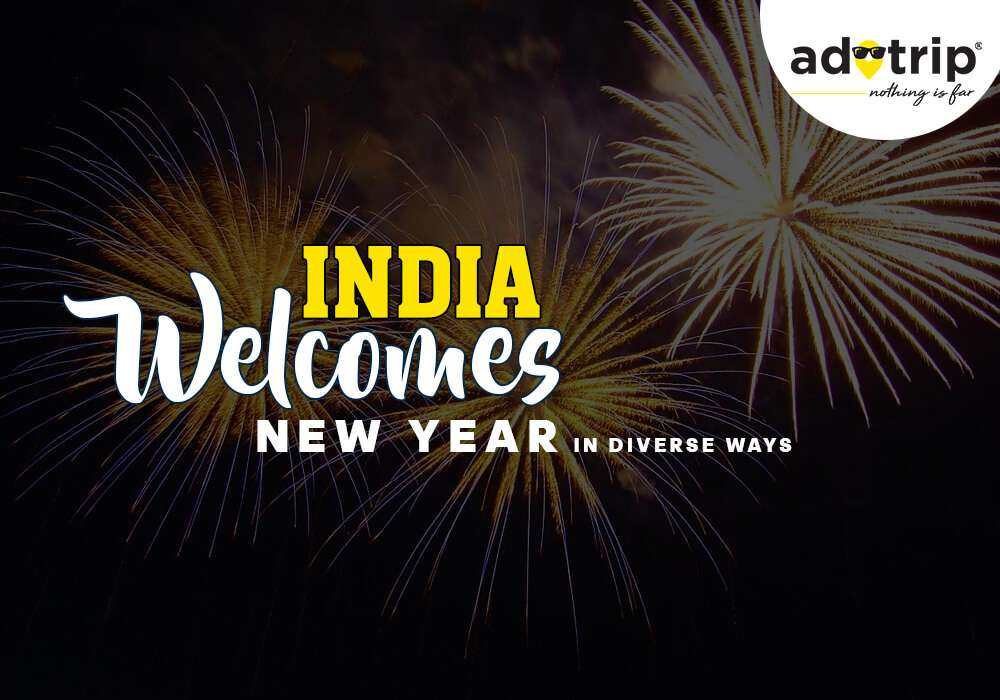


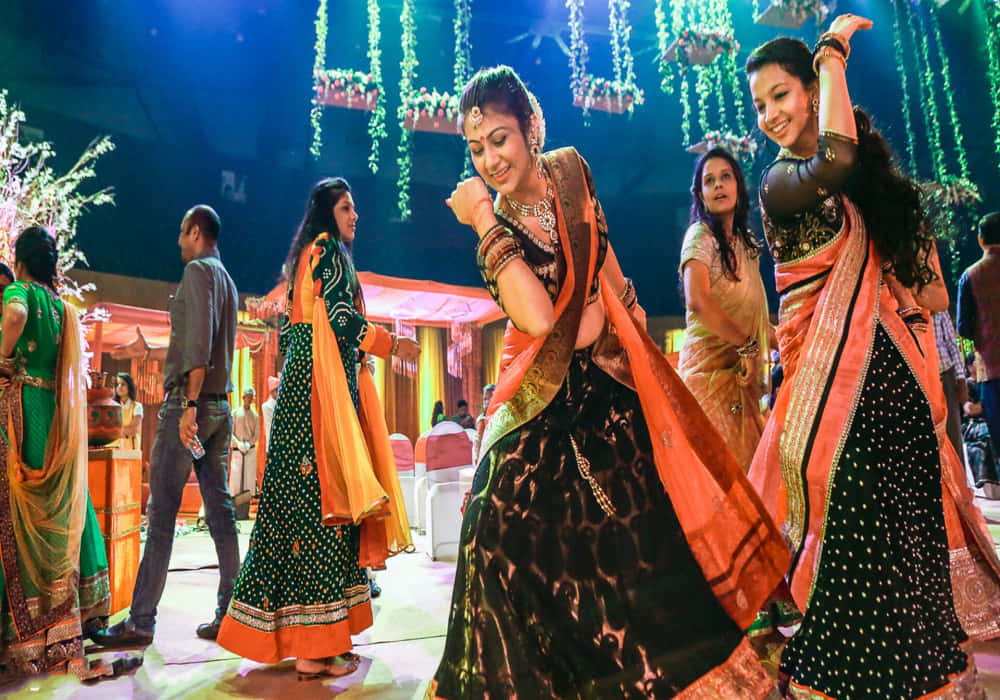
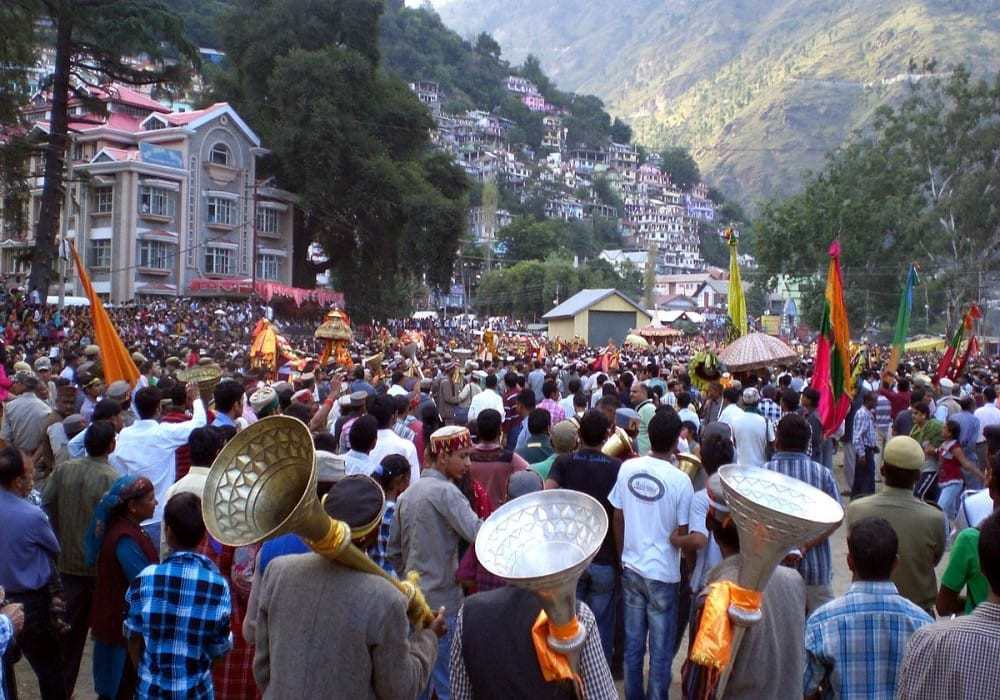
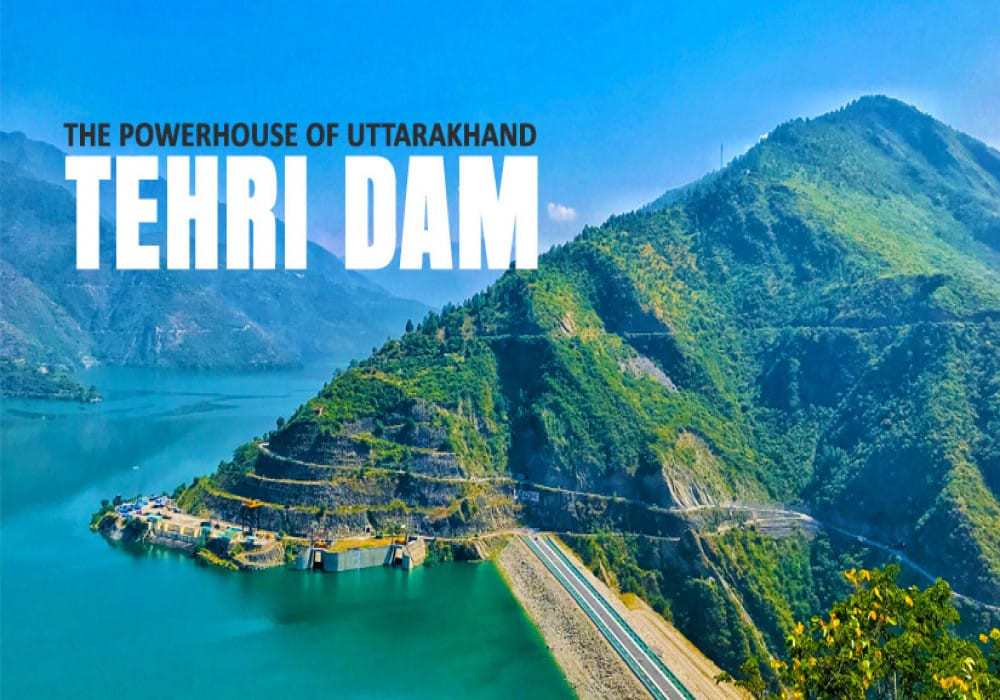


.jpg)
 Dubai
Dubai Malaysia
Malaysia USA
USA





